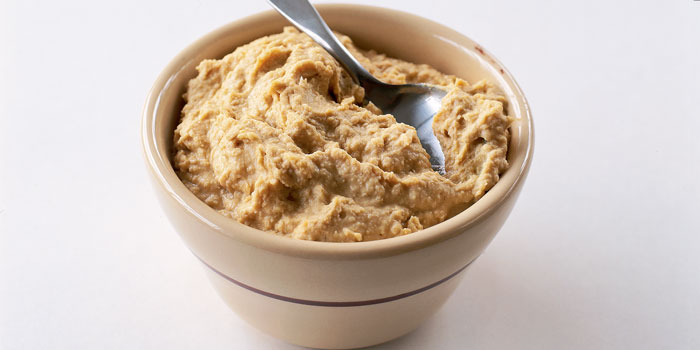
Pronounce it: hoom-iss, hum-iss
Hummus or houmous is a staple of Middle Eastern diets. It’s a purée of cooked chickpeas, flavoured with tahini (a paste of roasted sesame seeds) plus olive oil, lemon juice and salt, and is classically served as a dip with hot flatbreads, but is equally good as a dip for raw vegetables.
Although very nutritious, it is rather high in calories so should be eaten in moderation by those watching their weight.
Read our guide on whether to make or buy hummus.
Availability
Widely sold commercially, both plain and with many types of added flavourings. Easily made at home if you have a liquidiser or food processor.
Choose the best
Fresh is best. Beware when ordering in restaurants, especially abroad. Hummus can cause food poisoning if it is kept too long and at too high an ambient temperature.
Store it
It’s best eaten as soon as possible after making it, or after opening any commercial container, and should then be refrigerated and stored for a maximum of just a few days. It smells and tastes acidic when it goes off.
Cook it
You make it rather than cook with it, although it can make an interesting addition to a salad dressing or dabbed onto roasted vegetables, or even into a baked potato.
Serve in shallow plates, dribbled with olive oil and sprinkled with za’atar or sumac – or both.
Be the first to comment on "Hummus"